Reversing the loop on imposter syndrome

This framework really helped me when I was combating massive imposter syndrome, some years ago. It feels a bit vulnerable to share this, but I think it feels distant enough now, and it will feel worthwhile if this helps even one or two people.
Disclaimer: I am not a mental health professional, and I am just sharing something that was helpful for me, in case it will be helpful for you.
If you want to skip the intro and go straight to the framework, click here.
Or see Tweet summary.
Get ready for some diagrams!! :D
My experience
After my PhD in neuroscience, I made a career transition into AI startups, and then into AI research. If we map out my confidence as I was transitioning from between fields, it might look like this:
In the early part of my career, my confidence levels were generally above the minimum for feeling a sense of belonging. And they very naturally increased with more experience in each new setting (the PhD, and then in startups):

(don’t overinterpret the higher frequency squiggles – that’s just me trying to draw with a mouse!)
When I moved to AI research, I again found myself in a new setting, but something was different… My confidence seemed to decrease and my imposter syndrome increased over time!

A lot of it was due to being in a nearly-all-male environment for the first time. This blog is not about the experiences and workplace issues that can arise from that, and I do believe that things have improved. The point in this story is just that those experiences severely affected my confidence and sense of belonging. There are many many other reasons that people can fall into imposter syndrome, and I hope the following framework can be helpful in a general way. At the same time, I’ve seen that this is a common situation, and my heart goes out to you if you’ve had similar struggles.
My confidence started to improve a bit, when I had an early success with a spotlight paper at ICLR.
But then… when I moved to DeepMind, I entered what I could call my period of MASSIVE IMPOSTER SYNDROME. I held a highly coveted position and felt like I didn’t deserve it – I barely felt like I belonged at the previous job, and this one was even more competitive. It didn’t help to be starting a new job in the middle of a pandemic, and still trying to grapple with my previous experiences.

I struggled with this for a year or more. But then, things started to improve dramatically!
What happened here?
→ How did I end up in that long trough, and why did I get stuck there?
→ How did I get out of it?
Key idea #1: The loop of imposter syndrome
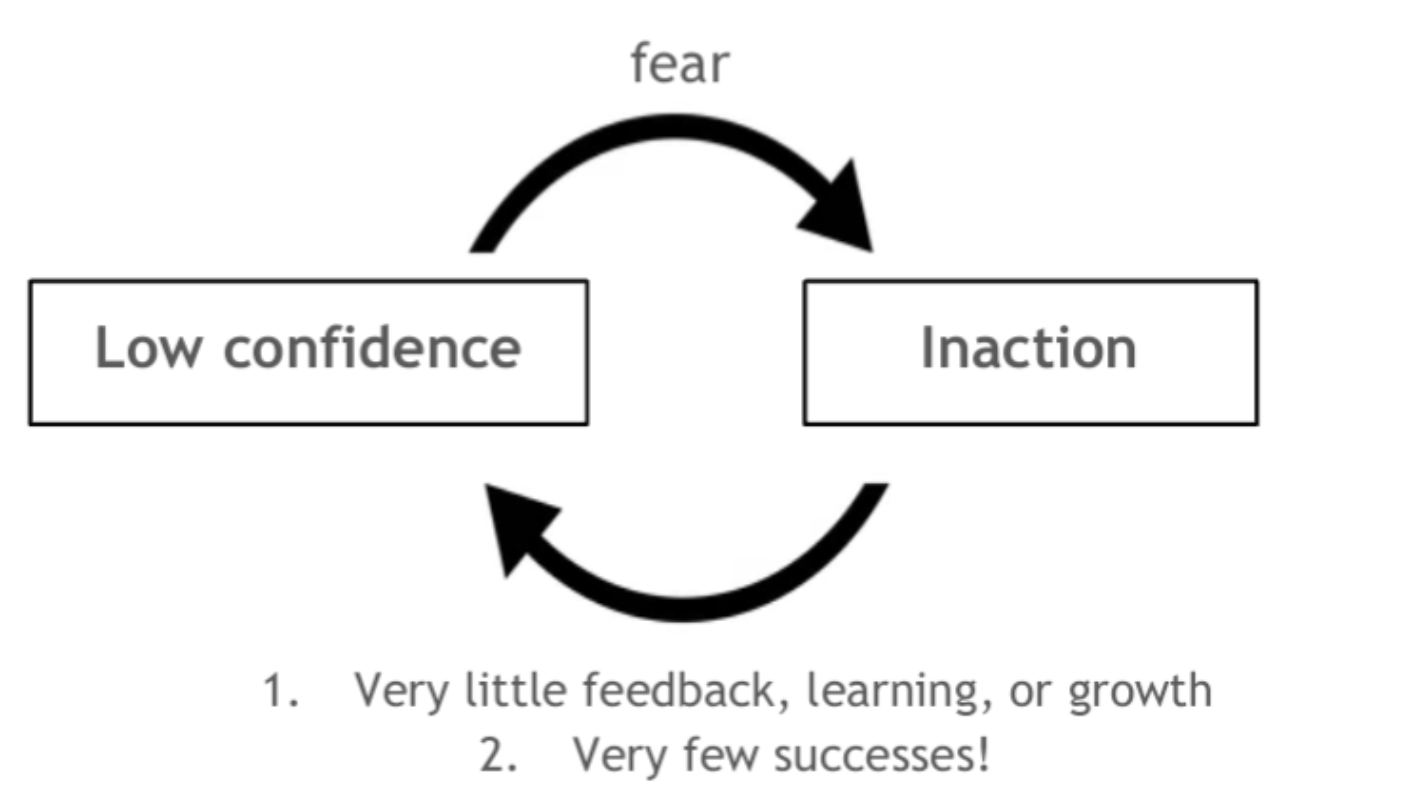
When we have low confidence (imposter syndrome), we are often afraid to take action in the world.
By “action”, I mean actions that have an external impact. And this is different from “work”.
Examples:
- I was working 7 days a week, but I was afraid to send jobs to the compute cluster because I thought I might waste resources!
- A coworker wrote an entire project proposal, and then never sent it to anybody.
- I was chatting with a cab driver in London – she studied intensely for a year to pass the cab driver test, but waited another whole year before actually starting to drive! This was because she was afraid that she wouldn’t be able to take customers to the correct location. She didn’t call this “imposter syndrome”, but I think it definitely fits this pattern.
Because of this fear of taking action, we then get very little feedback (positive or negative), which then leads to little learning and growth. We also get very few successes!
This lack of growth and success further decreases our confidence, and the cycle continues…
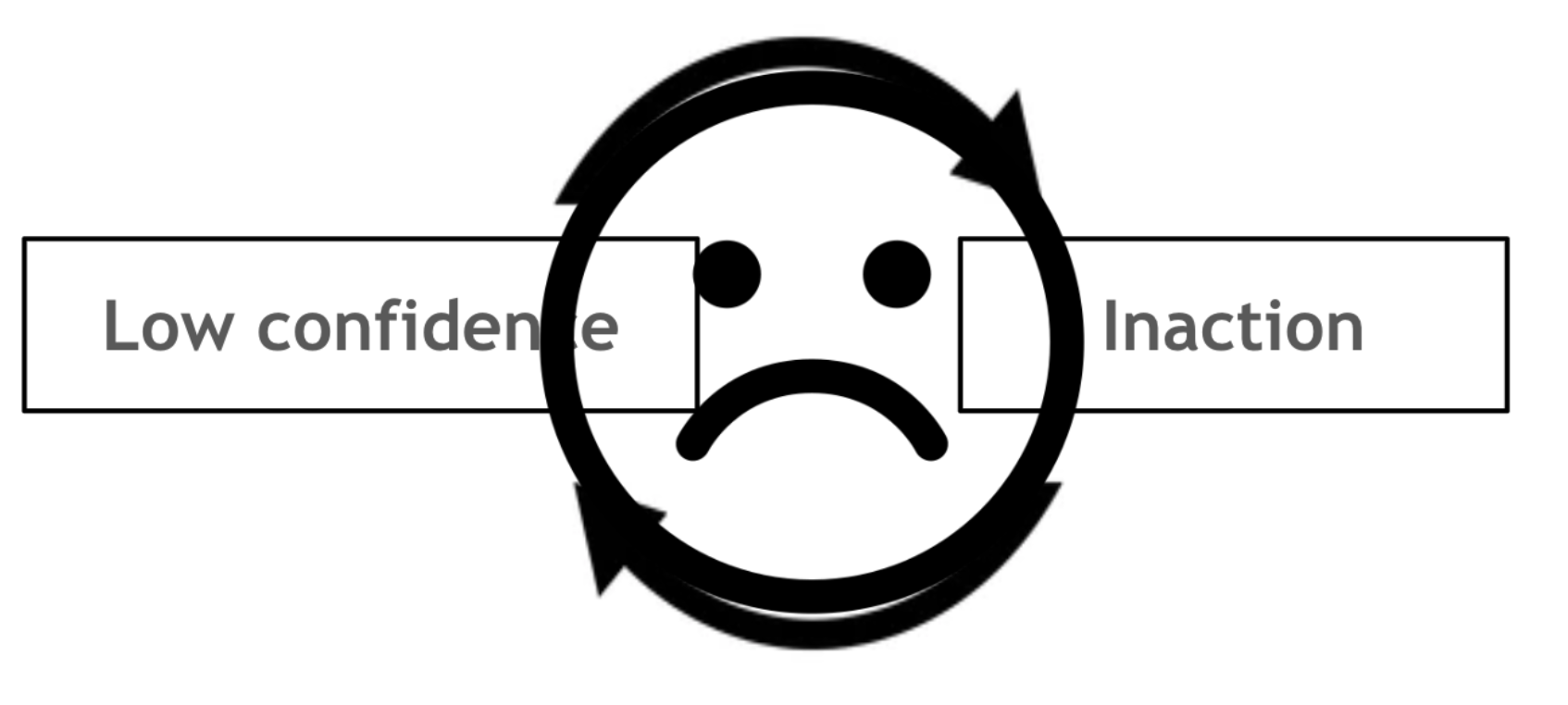
Key idea #2: To break the loop, intervene at both points.
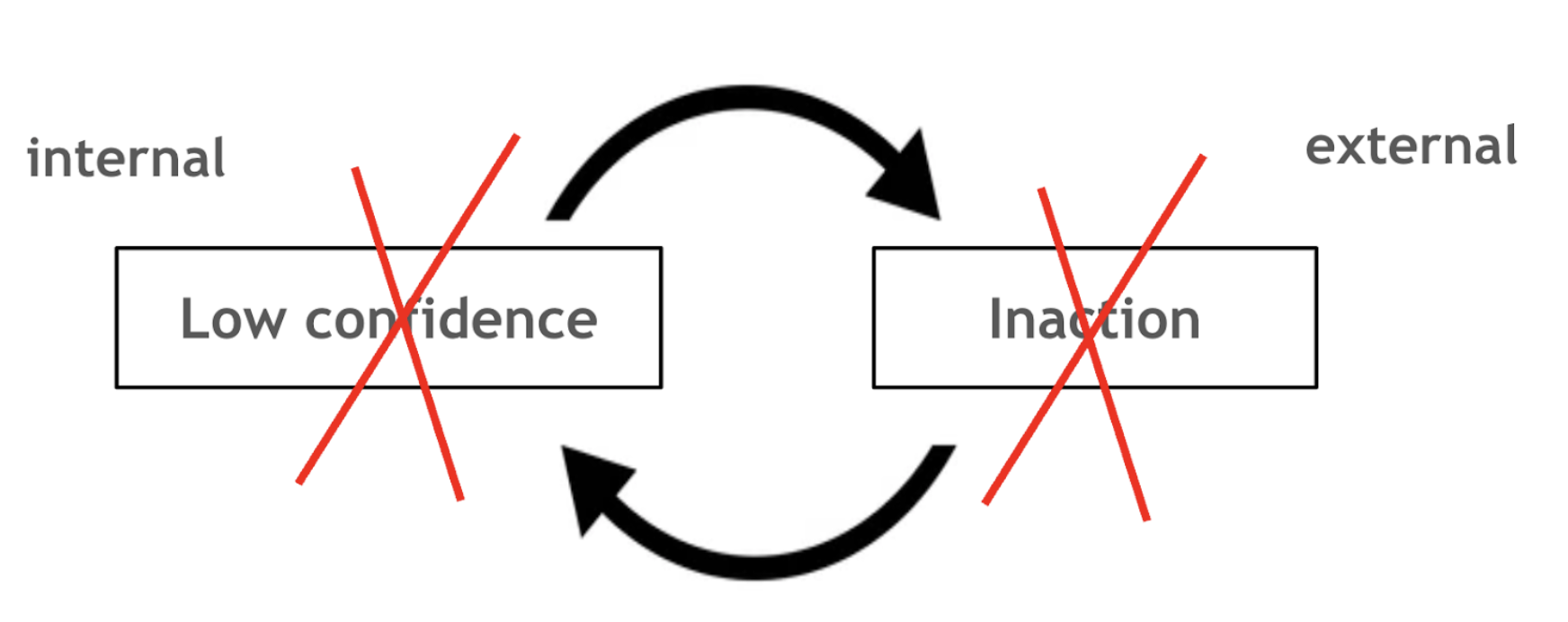
To intervene on this loop, we can target the confidence (internally focused) or the inaction (externally focused).
I think many of us tend to gravitate towards solutions in one basket or the other. For example, some folks are more naturally inclined towards introspection and self reflection. And psychologists and therapists tend to focus on the internal – beliefs, etc. Other folks may focus more naturally on the external – work harderrrrr!!
But I think that we often have to do both, for maximal effectiveness.
It’s probably less effective to intervene only on the internal state, because it’s so helpful to have real growth, learning, and success in the external world.
It’s also probably less effective to intervene only on the external states, if our confidence is so low that that is difficult to do. The other thing is to remember: taking externally-impactful action (those that lead to feedback and outcomes) is different from pure volume of work, as I mentioned above.
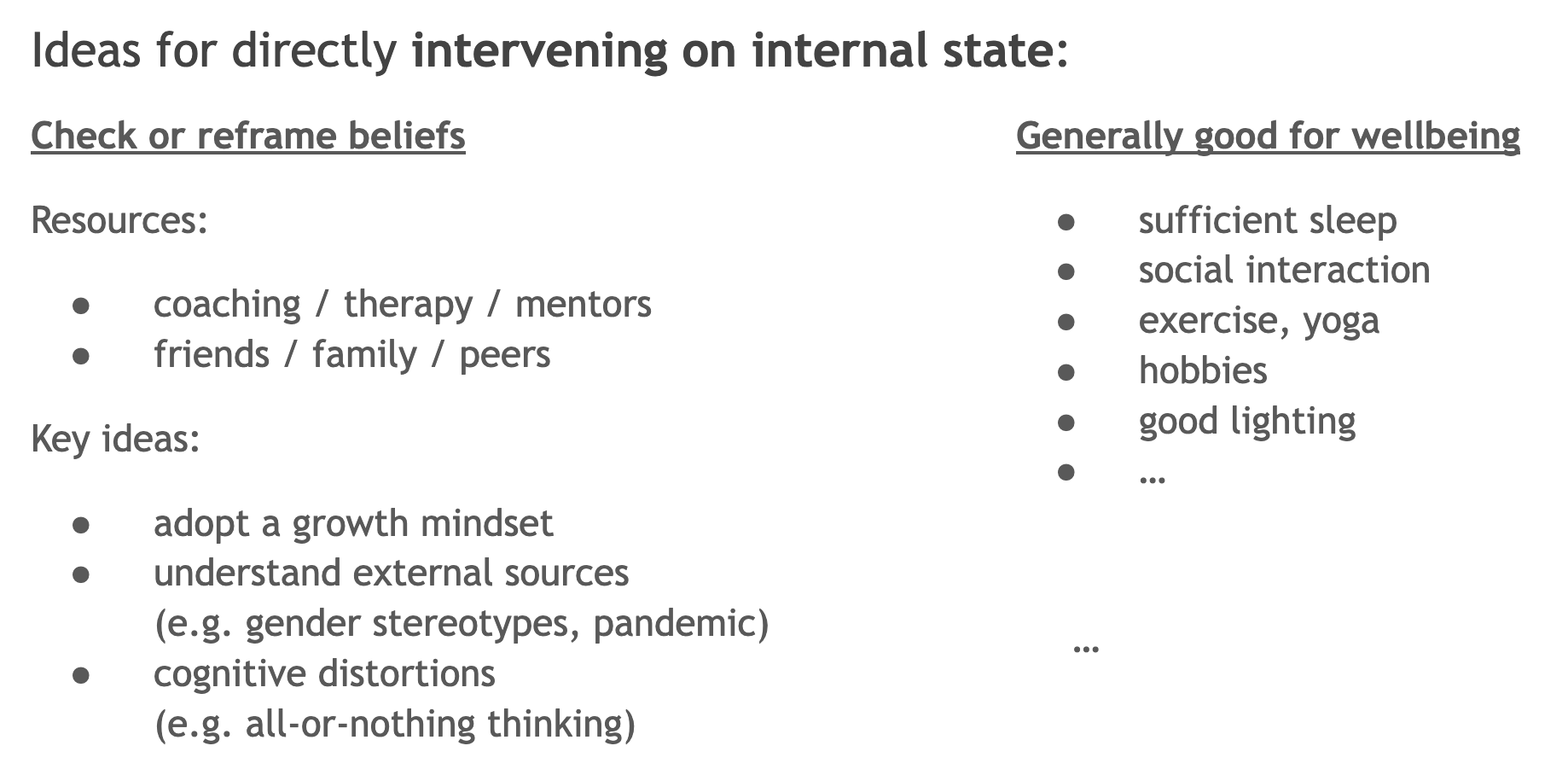
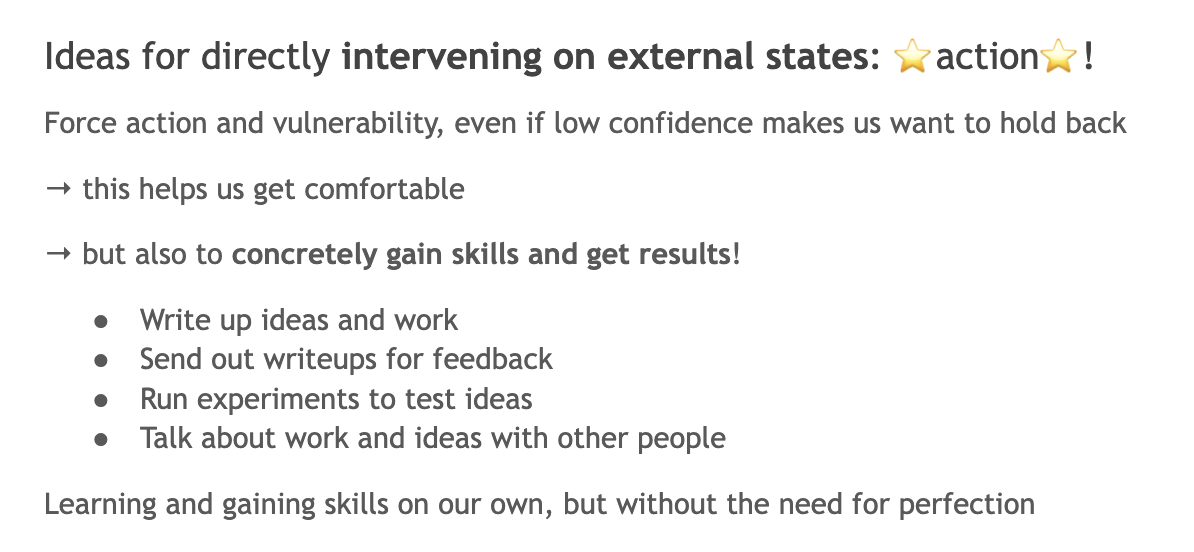
If there are other ideas that you recommend, please share!
By intervening on our internal state, we can have higher confidence. This makes us more comfortable with taking action. This then leads to more learning, growth, and success, which then leads to higher confidence!
By reversing the loop in this way, we can then move out of the trough of imposter syndrome.
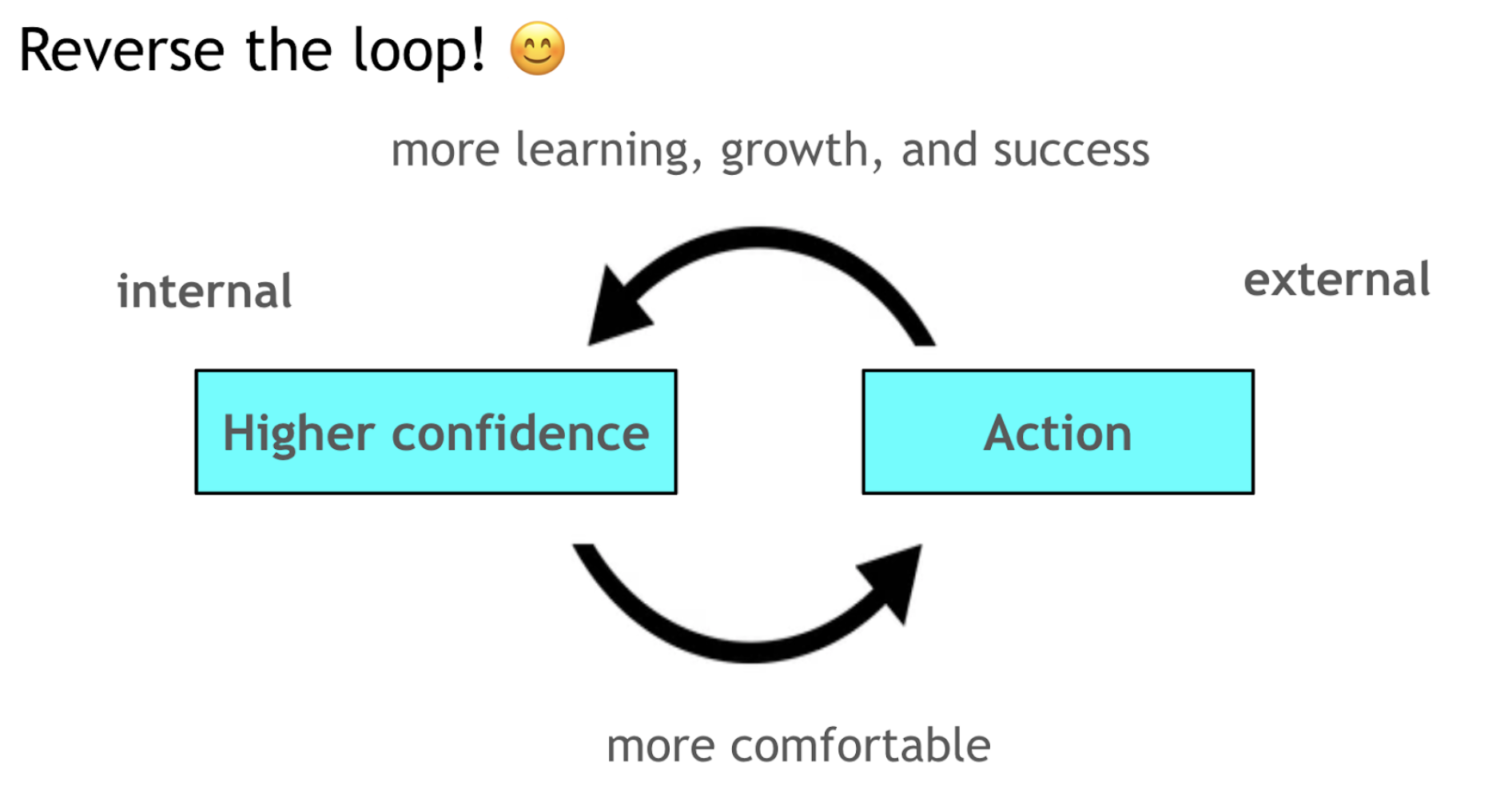
Conclusion
Key idea 1: The loop of imposter syndrome — low confidence feeds inaction, which feeds low confidence, which feeds inaction, …
Key idea 2: Break the cycle at both points — we need interventions on both internal and external states → this can reverse the loop!
I hope that this framework might be helpful to you, and that it might help you exit the imposter syndrome more quickly than I did. In any case, however, please know that imposter syndrome is very common, and please do not feel alone if you are experiencing it.